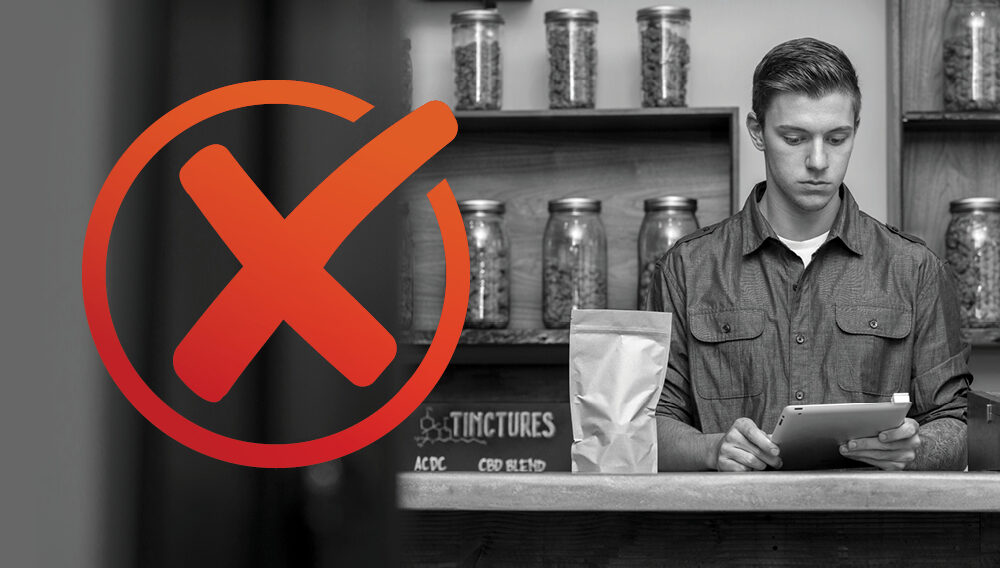New York Towns Opting Out of Cannabis Retail?

The deadline for New York state municipalities to opt-out of legal cannabis retail has officially passed. As of early January, 718 New York municipalities have opted out of cannabis dispensary retail locations. While a significant portion of towns decided to stay on the sidelines, municipalities can opt in at any time. But what is holding towns back from rolling out at the dawn of the state’s new industry? There are multiple reasons, from community fears to complete opposition to the plant.
Easing the minds of community members unsure about legal cannabis means informed decision-making, community engagement, and proper regulations must be at the forefront of New York’s industry.
By electing to opt out, municipalities may miss out on several benefits of the new industry. These municipalities will forfeit direct benefits from an influx of new industry jobs, which could generate prosperity for local businesses as well as municipal tax revenue. Opting out also comes with its own set of risks, as communities lose out on millions in tax revenue and opportunities to shape the industry.
What are the concerns and consequences?
Cities That Opt-out Lose Out on Revenue
Some cities have already missed out on millions of dollars of revenue by opting out in their respective state. For example, Colorado Springs could have netted between $70 to nearly $100 million in five years had it chosen to opt in. However, the city has declined retail sales of cannabis since Colorado legalized cannabis in 2012.
Missing Out on Increased Real Estate Value
One study suggests opting out could impact real estate value. According to Clever Real Estate, between April 2017 and April 2021, property values grew $17,113 more in states that adopted legal recreational cannabis compared to states without legal recreational cannabis programs. Additionally, they found cities with more dispensaries positively correlated with higher home values. While more research is needed to definitively link cannabis sales with increasing real estate value, this study demonstrates a more direct impact for residents to consider.
Considering on a local level that increased property value brings increased property tax, towns with cannabis businesses may receive extra capital that could go to fund local programs such as education and libraries, and public works like water and construction.
What are the fears communities have about opting in?
Teen Access to Cannabis
Communities have notable concerns about allowing recreational cannabis businesses. One apprehension is that opting out will keep the community and its children safer.
Some parents believe opting in could lead to a rise in teen cannabis use. In states with legal cannabis, studies have revealed cannabis use in teens has not increased. Opting in regulates who is able to sell cannabis, meaning those shopping in a legal dispensary will be asked for proof of ID to verify age upon purchase.
Cannabis-Impaired Driving
Another common fear is that cannabis-impaired driving will increase the prevalence of car accidents. Cannabis is stored in the body for significantly longer periods of time than other drugs, sometimes with cannabis remaining detectable for the body for weeks after consumption. Cannabis pharmacology is complex, and we still don’t understand how we can adequately measure impairment.
There is currently no evidence that legalizing cannabis creates more of a risk of impaired drivers. In fact, some preliminary evidence points to the opposite. However, significantly more work needs to be done between scientific research and public policy.
What good could opting in do?
Opting in Creates an Opportunity to Resolve Racial Disparities
Opting in may mitigate racial disparities that presently exist in cannabis arrests. Statistics show that Black Americans are more likely to be arrested for cannabis offenses than White Americans. Legalization provides an important opportunity to challenge that disparate standard by reducing arrests and reducing existing racial inequalities. Communities that opt in have the opportunity to redirect funds to encourage community development opportunities to bolster local workforces and educational attainment.
Reduce Exposure to Harmful Substances with Regulatory Testing
Opting in may also decrease exposure to potentially harmful cannabis crops. Before it reaches dispensaries, cannabis plants are upheld to strict regulations, undergoing rigorous quality testing for markers such as heavy metals and mold, and it is barred from exhibiting high pesticide counts. Undergoing rigorous lab testing mitigates the chances of exposure to harmful chemicals that may be found in under-regulated substances.
How Can Elected Officials Get the Right Information?
Making evidence-based decisions requires just that — evidence. Fortunately, we now have numerous years of data after various states have implemented legalization measures. This can help us share facts and guide the direction on how to make policy decisions.
Most communities are guided by elected officials who vote on these decisions. To get detailed data and address concerns surrounding cannabis, elected officials can get in touch with experts to strategically plan and create policy to effectively serve their communities.
Community governments that chose to opt in will also be able to make appropriate resolutions in using a new source of tax revenue to organize programs to tackle teen cannabis use and invest in measures that make constituents safer.
Right now is a pivotal moment in the infantile New York industry, and citizens across the state need clear education to understand the budding market. Elected officials should devise plans using information from states and communities that already have a legal framework. They should also look to researchers, doctors, and grassroots activists who have been working on the ground level for years.
Get Community Members Involved
Finally, elected officials should involve community members in navigating these decisions. Communities that choose to opt in will be able to generate recommendations to empower citizens to make better decisions for themselves and their neighbors. Opting in can also facilitate the introduction of harm reduction measures. To boost confidence in their leadership and in their communities, elected officials can engage all their resources to ensure their communities stay safe while a market is properly built.
Conclusion
Cannabis legalization is here to stay in New York, and municipalities are facing numerous concerns that have led many to opt out of retail operations at its onset. Opting out could cost towns massive revenue opportunities, continued racial disparities, and would keep community members from vital support to tackle issues like impaired driving and teen cannabis use.
Being involved in the retail market from the beginning will offer advantages for New York municipalities. An opportunity exists for communities to roll out a retail program alongside cannabis legalization to help shape the market and reflect community values. Opportunities for further education and information are available. Excelsior’s Cannabis Control certificate can educate you on the complexities of the cannabis industry and its accompanying regulations.


